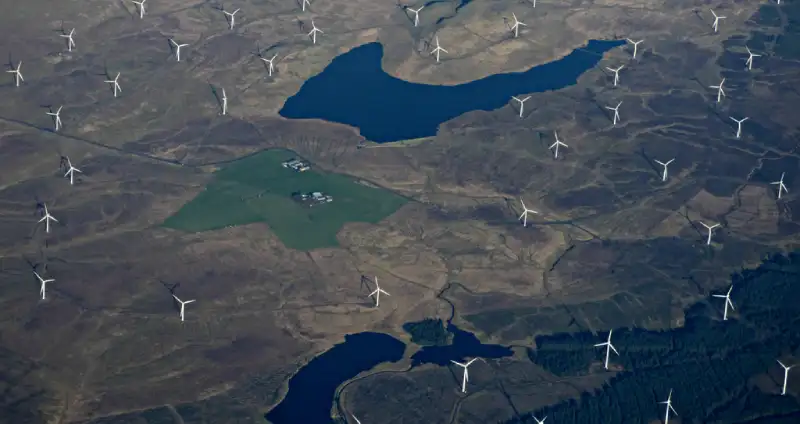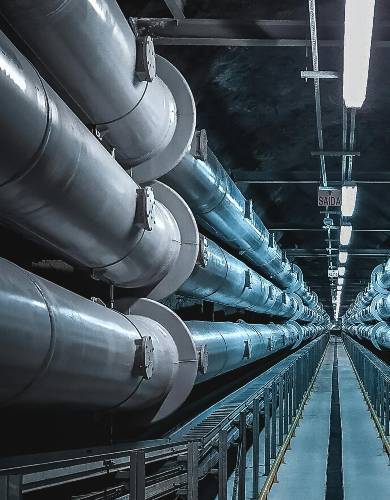TEC Amnesty: Easing the gridlock in the UK grid
💡 10% of the UK’s current power capacity is stuck in a bureaucratic queue, and the TEC Amnesty (or rather, extension of the amnesty!) is there to facilitate projects that didn’t work out to leave the queue and leave a straightforward path to those vying for a quick connection to the grid!
The UK’s ambitious pledge to achieve net zero by 2050 is not just a matter of political will or technological innovation but a matter of jumping bureaucratic hurdles, like the grid connection queue.
As energy projects vie for a spot to connect to the national grid, a logjam has formed, stalling the rollout of vital renewable energy sources.
At the heart of this bottleneck is the Transmission Entry Capacity (TEC) system: a contractual arrangement that is designed to streamline the connection process.
Unfortunately, it has inadvertently contributed to delays through excessive bureaucracy: Projects vying for a connection can’t adjust or leave the queue without paying a fee, blocking the path for other, ready-to-go renewable initiatives.
The solution to this bureaucratic gridlock: the TEC Amnesty, let’s dive in.
Contents
- What is the problem with the TEC?
- What is the TEC Amnesty?
- The benefits of the TEC Amnesty
- A hypothetical example
- Technocracy 1, Sensationalism 0
What is the problem with the TEC?
The Transmission Entry Capacity (TEC) is a contractual agreement between energy projects and the National Grid that determines the amount of energy a project will export onto the grid and sets a specific date for when this energy will be generated. In essence, it’s a reservation system, allowing projects to secure their spot in the connection queue.
However, the TEC system has inadvertently become a bottleneck, with the National Grid’s records showing a staggering 1,444 projects on the TEC register. While many of them are ready to deliver, others have faced delays, amended their output capacity, or have even turned only marginally viable.
Yet, their reserved positions in the queue remain intact, preventing new (and primarily renewable energy) projects from connecting. There are over 340GW now holding connection agreements, but a significant proportion of this is undeliverable. The result? A grid connection process that’s not just slow but also counterproductive to the UK’s renewable energy ambitions.
What is the TEC Amnesty?
The TEC Amnesty isn’t a novel concept, but its extension until September 2024 marks a renewed commitment to tackle the gridlock in the connection queue.
Introduced initially as a strategic solution, it offers projects that have stalled or are only marginally viable the chance to voluntarily vacate their reserved spots in the queue and, by doing so, avoid a financial penalty. This frees up the queue for new projects, a move which should be attractive for renewable energy investors.
An impressive 8GW of capacity is anticipated to be freed from the grid connection queue with this latest TEC Amnesty extension (approved in an open letter by Ofgem on August 15 2023). This may only be ~2% of the total capacity in the queue of 340 GW. Still, it’s about 10% of the UK’s current power capacity, making it a pivotal step in accelerating the UK’s journey to net zero.
This extended amnesty isn’t merely about administrative streamlining; it’s a strategic reordering, ensuring that projects with the most potential to advance the UK’s green energy goals are prioritised and fast-tracked.
The benefits of the TEC Amnesty
1) For projects in the queue
The TEC Amnesty offers a lifeline for generators, especially for those whose projects have hit unforeseen roadblocks or are teetering on the edge of viability.
Financial relief
Generators typically face significant cancellation charges if they back out or reduce their Transmission Entry Capacity (TEC). The amnesty waives these fees, offering a substantial financial reprieve for projects that might otherwise be burdened with hefty penalties, such as projects that must downgrade due to investors backing away or altogether unwind.
Enhanced flexibility
Beyond the monetary aspect, there’s the advantage of flexibility. The energy landscape is dynamic, and projects that once seemed promising might no longer align with a generator’s strategic direction. The amnesty offers an exit route without the usual punitive repercussions. This minimises sunk costs and allows generators to reallocate resources to more promising ventures.
2) For up-and-coming projects
Up-and-coming renewable (and other) projects competing for a place in the queue are also winning big time, as their waiting time may decrease significantly, giving decision-makers more certainty for resource allocation and making it overall a more attractive investment:
Fast-tracked connections
With the removal of stalled projects from the queue, new-generation projects can expect faster connection times. This means a quicker transition from planning to actual energy production, reducing the waiting period for new entrants.
Better, faster and more attractive
A streamlined queue process reduces uncertainties and potential delays, making new projects more attractive to investors, as the predictability of connection timelines directly impacts project feasibility and return on investment.
It also means new projects can better allocate resources, ensuring that manpower, finances, and materials are used efficiently without prolonged periods of inactivity due to bureaucratic delays.
3) Nationwide benefits
And finally, the ripples from the TEC Amnesty are likely to be felt industry-wide. Grid operators and strategists will be able to optimise their strategies, while BEIS may find it easier to deliver on its net zero by 2050 goals:
Grid Stability and Responsiveness
The amnesty ensures a more dynamic grid system. By prioritizing ready-to-launch projects, the grid can balance supply and demand more effectively, reducing the risk of outages and ensuring consistent power delivery.
This is particularly true with projects incorporating grid-scale energy storage, which helps balance out the variable inputs from intermittent renewables like wind and solar.
Accelerating Net Zero Ambitions
The UK’s goal of achieving net zero emissions by 2050 gets a boost as the amnesty facilitates faster integration of renewable energy sources (and any low-carbon source, for that matter), pushing the nation closer to its sustainability targets.
This may seem trivial to some, but it’s paramount for the UK’s global reputation and the continued pull of talent and investment, which has undoubtedly received a dent after Brexit. A low-carbon energy grid is attractive for companies that take ESG standards seriously.
Potential Reduction in Electricity Prices
With a quicker integration of renewable projects, especially those with lower operational costs like wind and solar, there’s a possibility of increased supply, leading to more competitive rates from business energy suppliers.
Since 2022, business electricity prices have soared to unprecedented highs, driven by surging gas prices. Unfortunately, each kWh of electricity sold in the UK is priced based on the costliest kWh produced, regardless of the source.
While this pricing model was manageable when the UK’s grid predominantly leaned on nuclear and fossil fuels, the divergence between renewables and natural gas has intensified this challenge. UK electricity pricing also needs a methodological overhaul, just like this TEC Amnesty!
A hypothetical example

To understand how the TEC Amnesty works, we present the hypothetical example of Windward Energy & Storage Solutions, a forward-thinking renewable energy company.
The project completed its seed round in 2018 and initially embarked on an ambitious project to establish a wind generator combined with an energy storage facility composed of flywheels.
Their initial projection was to contribute 300 MW to the national grid. Still, as the project progressed, technological advancements and design refinements led to a more efficient setup incorporating kite wind power and Compressed-Air Energy Storage (CAES).
The engineers at Windward discovered that they could achieve optimal performance and reliability with these technologies but at a slightly reduced capacity of 240 MW, which meant a reduction in the potential strain on the grid and significant cost savings for the company and, indirectly, for the consumers.
Recognising the benefits of their new design, Windward decided to apply for the TEC Amnesty. Their goal? Adjust their Transmission Entry Capacity (TEC) in line with their new capacity projections while saving tens of thousands of pounds in fees.
This move would align their contractual obligations with their actual output and free up 60 MW of capacity in the grid connection pipeline, paving the way for other renewable projects to come on board.
Technocracy 1, Sensationalism 0
The TEC Amnesty stands as a testament to the proactive measures taken by regulatory bodies to ensure the UK’s renewable energy future is not just a vision but an actionable plan. As part of the National Grid’s five-point plan, the amnesty clearly indicates that the path to a sustainable future requires technological innovation and administrative agility.
The TEC Amnesty sidesteps the potential quagmire of politicised debates and media sensationalism, showing how Ofgem and the National Grid ESO can successfully collaborate to find practical solutions without the meddling of politics.
It’s a reminder of how it’s these less ‘sexy’ stepping stones that will ultimately help us make the energy transition a reality and not any advancements in greenwashed ‘breakthroughs’ like wind blade recycling or Direct-Air Capture.
Follow us on Twitter for more in-depth content covering the latest in energy, water and telecommunications.

